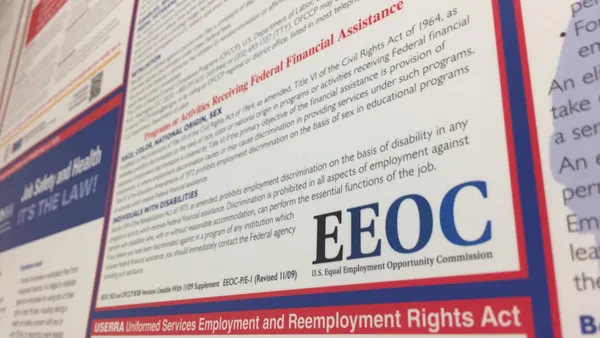More than six months into the COVID-19 pandemic, mask mandates, mandatory paid leave legislation and social distancing guidelines have become standard in U.S. workplaces. Moving forward, these compliance items may continue to evolve even as employers gradually reopen.
However, the challenge for HR departments extends beyond simply ensuring that physical spaces are compliant. In many states and localities, training operations have also been impacted.
Clear Law Institute, a Virginia-based organization that provides compliance training, keeps an ongoing list of state COVID-19 training laws. At press time, the list included 16 states, but the company continues to monitor all 50 states as well as Washington, D.C., on a daily basis for future additions and updates to existing mandates, said CEO Michael Johnson.
Awareness is the first step to complying with COVID-19 training requirements, Johnson said: "A lot of organizations are not even aware that they have to provide training in these 16 states." Moreover, those that have taken steps to comply "are overwhelmed" in doing so as the requirements shift, he said.
What COVID-19 training laws look like
So far, state laws vary not only in terms of the content on which employers are required to train employees, but also in terms of how that content is presented, according to Andrew Rawson, chief learning officer and co-founder at compliance training organization Traliant.
Illinois, for example, provides a digital checklist of the items that employers must include in their COVID-19 programming for workers. "Not all states are like this, but most are," Rawson said. The checklist includes topics such as the sources of novel coronavirus exposure, the symptoms of COVID-19 and the definition of what "high-risk populations" are.
Yet that same list demonstrates just how involved complying with such laws can be. The PDF file containing the checklist references the definition of "high-risk populations," but the file does not provide the definition at first glance. That information is housed elsewhere on the Illinois Department of Public Health's website, Rawson said.
Industry- and job-specific guidelines add an extra layer of complexity. Rawson pointed to the example of Connecticut, whose training guidelines are housed in a series of documents, each of which target specific types of businesses. Libraries in Connecticut have a 15-page document of rules and procedures to train on, whereas employers that operate senior centers in the state have a 19-page document to sift through.
Though much of the guidelines in Connecticut's example include some of the same general information, industry-specific guidelines require additional work on the part of the employer, Rawson said. He added that "at least a dozen states" adopt a similar, industry-specific approach to training guidelines.
How to comply
The two above examples hint at an observation made by Johnson, which is that employers should be thorough in searching for the guidelines they need to follow for training purposes. State-by-state, the list of potential sources may include:
- The state governor's website.
- Any state Occupational Safety and Health Administration (OSHA)-equivalent department websites.
- The state labor department's website.
- The state department of community and/or economic development.
Employers will not be fully compliant simply following federal guidelines, either, Johnson said. "It's not enough [for employers] to just train on CDC and OSHA recommendations. They have to dive into the regulations of each state and the industry they operate [in]."
Furthermore, employers should appoint at least one person, preferably a lawyer, to keep track of each applicable training mandate, Johnson said.
Both he and Rawson said most employers are opting for virtual training solutions to comply with the laws. Rawson noted that some employers may require employees to bring a certificate into work showing that they have completed the training in order to return to the workplace.
Remember to address worker stress
In addition to ensuring workers understand these requirements, employers must also pay attention to how workers are adjusting to the workplace overall, Rawson said. State and federal guidelines may be clearly laid out, but that does not mean employers will necessarily have an easy time adjusting to them.
"All they're dealing with is the facts," Rawson said of the states that have adopted training laws. "They're like doctors with no bedside manner."
Employers may want to tap their vendors for additional training that prepares workers emotionally and psychologically to return, he said. That could include updates and information to a specific office or work environment. Employers can address items such as which entrances and exits employees should or should not use; whether elevators are operational; where workers can find hand sanitizer; and how temperature check procedures will work, if applicable. "We don't want people to freak out if they see someone with scrubs on," Rawson said.
Successful training on this front will also require successful communication on the part of HR departments, Rawson added. For those working with employees who are remote, that means acknowledging that there may be a lack of nonverbal communication involved.
"When you're not with people in person, you don't get a lot of nonverbal communication," Rawson said. "[HR departments] have to be especially sensitive at reading between the lines when they're talking to employees about how they're feeling and doing."






















